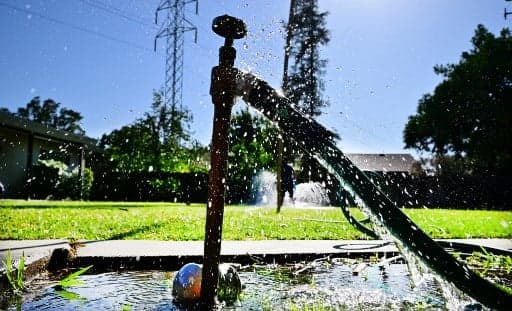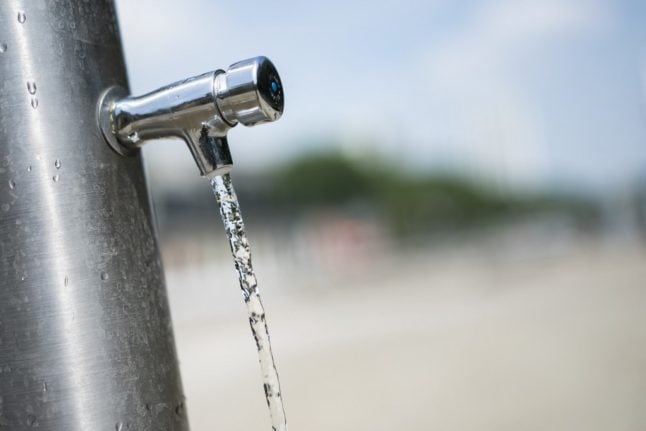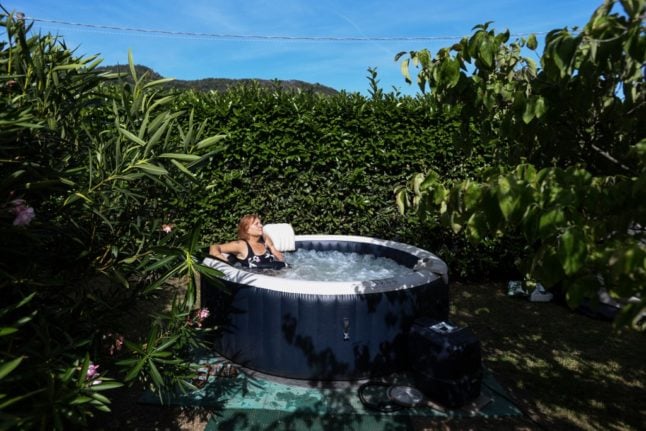Eight ways to save water during Italy’s drought

As Italy suffers its worst drought in 70 years, here are some simple ways to save water at home and help de-escalate the emergency.
Italy is currently experiencing its worst drought in decades, and water use restrictions remain in place in many parts of the country until the end of summer
Five northern regions were granted a ‘state of emergency’ in July, and hundreds of municipal authorities up and down the country have autonomously imposed water-saving measures, including limits on the use of drinking water.
READ ALSO: Hosepipe bans and pools: your questions answered on Italy’s drought restrictions
Even in areas where no official restrictions are in place, Italian authorities are asking everyone to make an effort to save water this summer. Guidelines released by government agency ENEA in July include the following advice:
Equip all of your taps with an aerator
Aerators mix the water coming out of regular taps with air and reduce water pressure, thus allowing households to save between 6,000 and 8,000 litres of water per year.
They can be found in any homeware shop, generally cost between one and two euros and are extremely easy to install yourself.
 There are some very simple ways to keep your water usage down. Photo by Kenzo TRIBOUILLARD / AFP
There are some very simple ways to keep your water usage down. Photo by Kenzo TRIBOUILLARD / AFP
Check you don’t have any leaks around the house
Granted, this might look like one of those ‘duh, really?’ pieces of advice. But the impact that even small leaks can have on a household’s water usage should not be underestimated.
A minor leak might mean that you are (quite literally) flushing up to 100 additional litres of water down the drain. So, if you spot a leak, get it fixed ASAP.
Equip your toilet with a dual flush plate (or button) or a flow-regulating handle
All ‘new-generation’ toilets should have one of the above. Otherwise, replacing your old flushing system with a more efficient one can save between 10,000 and 30,000 litres of water a year.
Take a shower instead of a bath
Baths are a wonderful way to relax and let go of the stress accumulated during the day. But they also use two to three times the average amount of water consumed by having a regular shower (that is, between 40 and 60 litres). So in these times, you might want to opt for a shower instead.
Don’t keep the water running when it’s not necessary
There is, of course, no need to keep the tap on when you don’t need running water. Something to consider during a number of daily activities, including brushing your teeth and shaving.
Start your dishwasher and washing machine only when they’re fully loaded
Make sure you switch on these appliances only when they’re at full capacity. Also, avoid hand-washing: contrary to what some may think, it is in fact far more wasteful than using electronic appliances.
For instance, washing dishes by hand will use about 60 to 70 litres of water a day, whereas a single dishwasher cycle consumes 12 to 15 litres of water on average.
READ ALSO: ‘Four to five light meals a day’: Italy’s official advice for surviving the heat
 Local authorities in drought-hit areas are asking residents not to fill up pools. Photo by Piero CRUCIATTI / AFP
Local authorities in drought-hit areas are asking residents not to fill up pools. Photo by Piero CRUCIATTI / AFP
Only wash your car when strictly necessary and use a bucket
Who doesn’t like a clean, shiny car? But in times of crisis, some small sacrifices are called for. So, one of the most common recommendations is to wash your vehicle only when absolutely necessary, and to do so by using a bucket rather than a hose.
Water your plants at night
Water evaporates quickly during the peak hours of the day, whereas the evaporation rate is lower in the evening, when the temperature falls.
Watering your plants in the evening will allow them to absorb more water and, in turn, save your household (and the environment) between 5,000 to 10,000 litres of water per year.
Bonus entry: Don't fill up inflatable pools (or any other pool)
The lure of an inflatable pool filled to the brim with cold water is no small thing, especially in areas where the sea or the fresh water of rivers and lakes are only a distant fantasy.
However, a dip in your back garden pool is still by no means essential, and many drought-hit areas are asking residents not to fill theirs up at the moment.
Comments
See Also
Italy is currently experiencing its worst drought in decades, and water use restrictions remain in place in many parts of the country until the end of summer
Five northern regions were granted a ‘state of emergency’ in July, and hundreds of municipal authorities up and down the country have autonomously imposed water-saving measures, including limits on the use of drinking water.
READ ALSO: Hosepipe bans and pools: your questions answered on Italy’s drought restrictions
Even in areas where no official restrictions are in place, Italian authorities are asking everyone to make an effort to save water this summer. Guidelines released by government agency ENEA in July include the following advice:
Equip all of your taps with an aerator
Aerators mix the water coming out of regular taps with air and reduce water pressure, thus allowing households to save between 6,000 and 8,000 litres of water per year.
They can be found in any homeware shop, generally cost between one and two euros and are extremely easy to install yourself.

Check you don’t have any leaks around the house
Granted, this might look like one of those ‘duh, really?’ pieces of advice. But the impact that even small leaks can have on a household’s water usage should not be underestimated.
A minor leak might mean that you are (quite literally) flushing up to 100 additional litres of water down the drain. So, if you spot a leak, get it fixed ASAP.
Equip your toilet with a dual flush plate (or button) or a flow-regulating handle
All ‘new-generation’ toilets should have one of the above. Otherwise, replacing your old flushing system with a more efficient one can save between 10,000 and 30,000 litres of water a year.
Take a shower instead of a bath
Baths are a wonderful way to relax and let go of the stress accumulated during the day. But they also use two to three times the average amount of water consumed by having a regular shower (that is, between 40 and 60 litres). So in these times, you might want to opt for a shower instead.
Don’t keep the water running when it’s not necessary
There is, of course, no need to keep the tap on when you don’t need running water. Something to consider during a number of daily activities, including brushing your teeth and shaving.
Start your dishwasher and washing machine only when they’re fully loaded
Make sure you switch on these appliances only when they’re at full capacity. Also, avoid hand-washing: contrary to what some may think, it is in fact far more wasteful than using electronic appliances.
For instance, washing dishes by hand will use about 60 to 70 litres of water a day, whereas a single dishwasher cycle consumes 12 to 15 litres of water on average.
READ ALSO: ‘Four to five light meals a day’: Italy’s official advice for surviving the heat

Only wash your car when strictly necessary and use a bucket
Who doesn’t like a clean, shiny car? But in times of crisis, some small sacrifices are called for. So, one of the most common recommendations is to wash your vehicle only when absolutely necessary, and to do so by using a bucket rather than a hose.
Water your plants at night
Water evaporates quickly during the peak hours of the day, whereas the evaporation rate is lower in the evening, when the temperature falls.
Watering your plants in the evening will allow them to absorb more water and, in turn, save your household (and the environment) between 5,000 to 10,000 litres of water per year.
Bonus entry: Don't fill up inflatable pools (or any other pool)
The lure of an inflatable pool filled to the brim with cold water is no small thing, especially in areas where the sea or the fresh water of rivers and lakes are only a distant fantasy.
However, a dip in your back garden pool is still by no means essential, and many drought-hit areas are asking residents not to fill theirs up at the moment.
Join the conversation in our comments section below. Share your own views and experience and if you have a question or suggestion for our journalists then email us at [email protected].
Please keep comments civil, constructive and on topic – and make sure to read our terms of use before getting involved.
Please log in here to leave a comment.